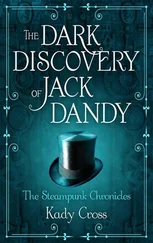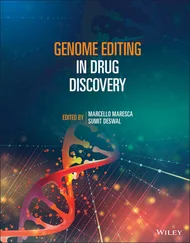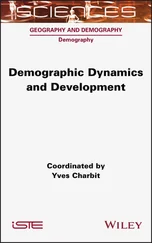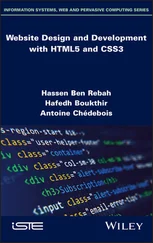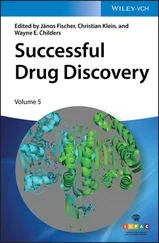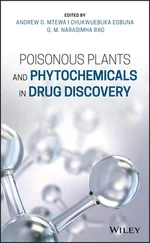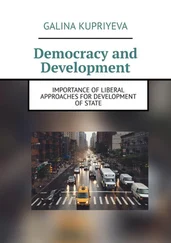Contemporary Accounts in Drug Discovery and Development
Здесь есть возможность читать онлайн «Contemporary Accounts in Drug Discovery and Development» — ознакомительный отрывок электронной книги совершенно бесплатно, а после прочтения отрывка купить полную версию. В некоторых случаях можно слушать аудио, скачать через торрент в формате fb2 и присутствует краткое содержание. Жанр: unrecognised, на английском языке. Описание произведения, (предисловие) а так же отзывы посетителей доступны на портале библиотеки ЛибКат.
- Название:Contemporary Accounts in Drug Discovery and Development
- Автор:
- Жанр:
- Год:неизвестен
- ISBN:нет данных
- Рейтинг книги:4 / 5. Голосов: 1
-
Избранное:Добавить в избранное
- Отзывы:
-
Ваша оценка:
- 80
- 1
- 2
- 3
- 4
- 5
Contemporary Accounts in Drug Discovery and Development: краткое содержание, описание и аннотация
Предлагаем к чтению аннотацию, описание, краткое содержание или предисловие (зависит от того, что написал сам автор книги «Contemporary Accounts in Drug Discovery and Development»). Если вы не нашли необходимую информацию о книге — напишите в комментариях, мы постараемся отыскать её.
A useful guide for medicinal chemists and pharmaceutical scientists Contemporary Accounts in Drug Discovery and Development
Contemporary Accounts in Drug Discovery and Development
Contemporary Accounts in Drug Discovery and Development
Contemporary Accounts in Drug Discovery and Development — читать онлайн ознакомительный отрывок
Ниже представлен текст книги, разбитый по страницам. Система сохранения места последней прочитанной страницы, позволяет с удобством читать онлайн бесплатно книгу «Contemporary Accounts in Drug Discovery and Development», без необходимости каждый раз заново искать на чём Вы остановились. Поставьте закладку, и сможете в любой момент перейти на страницу, на которой закончили чтение.
Интервал:
Закладка:
3.4.2 Development Chemistry Route to Vericiguat
While the synthesis route to vericiguat described in Section 3.4.1was straightforward and high yielding, it nevertheless did not fulfill all criteria for an efficient process development synthesis. After significant experimentation and route scouting, our chemical development team finally established a very short, high yielding and more economic synthesis toward the cyano derivative 25( Scheme 3.4). The key step in this route is the condensation reaction of acrylaldehyde derivative 35with ethyl 5‐amino‐1‐(2‐fluorobenzyl)‐1 H ‐pyrazole‐3‐carboxylate [28] 36in ethanol yielding ethyl ester intermediate 37. This ester was then converted in two steps to the nitrile 25.

Scheme 3.2 High yielding route to trisamine 24.

Scheme 3.3 Scale‐up synthesis of iodide 21.

Scheme 3.4 Development route to key intermediate 25.

Scheme 3.5 Optimized scheme for the synthesis of acrylaldehyde derivative 35.
The synthesis of the acrylaldehyde derivative 35started with activation of 2,2,3,3‐tetrafluoro‐1‐propanol 38with trifluoromethanesulfonic anhydride and subsequent treatment with morpholine to yield 39. At 135 °C, 39was alkylated with methyl methanesulfonate leading to quaternized derivative 40which was converted into 41using sodium hydroxide. Further reaction with morpholine and triethylamine yielded 35after crystallization from toluene ( Scheme 3.5).
3.5 Preclinical Studies
The pathophysiology of CV diseases including HF includes endothelial cell dysfunction which impairs NO production leading to decreased NO availability and reduced cGMP tissue levels. This reduced NO availability and insufficient stimulation of sGC results in systemic, vascular dysregulation, affecting the coronary, pulmonary, and renal circulation. Moreover, impaired sGC signaling leads to organ damage and dysfunction of the heart. Therefore, sGC stimulation by vericiguat could provide a novel approach for the treatment of CV diseases and different forms of HF. Vericiguat has a unique mode of action and was extensively profiled preclinically in vitro , on the isolated sGC enzyme and on isolated vessels, ex vivo in isolated hearts and in vivo in a rat model of CV disease associated with cardiorenal syndrome.
3.5.1 In vitro Effects on Recombinant sGC and sGC Overexpressing Cells
In vitro ,vericiguat led to a concentration‐dependent stimulation of the sGC enzyme. Even in the absence of NO, vericiguat stimulated the sGC by 1.7‐fold to 57.6‐fold ( Figure 3.5). When vericiguat was combined with the NO donor diethylamine/nitric oxide complex (DEA/NO), a synergistic effect on sGC activity and cGMP stimulation was observed over a wide range of concentrations ( Figure 3.5). In addition, the stimulation of sGC by vericiguat was examined in vitro in recombinant CHO cells overexpressing sGC. Vericiguat stimulated these sGC reporter cell lines concentration dependently, with an EC 50of 1005 ± 145 nM. In the presence of the NO donor S ‐nitroso‐ N ‐acetyl‐D,L‐penicillamine (SNAP) (30 and 100 nM), the EC 50value shifted to 39.0 ± 5.1 nM and 10.6 ± 1.7 nM, respectively ( Table 3.6). Thus, vericiguat exhibits the characteristics of a potent and selective sGC stimulator, stimulating sGC NO independently and in synergy with NO.
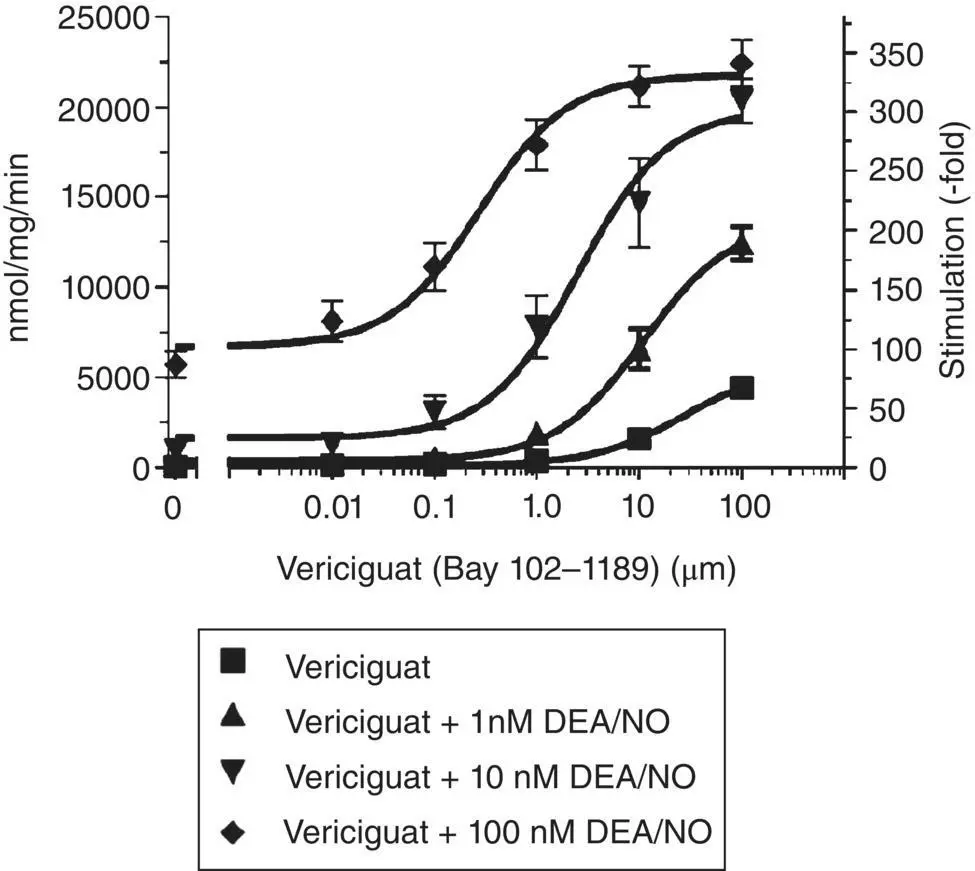
Figure 3.5 Concentration‐dependent effects of vericiguat and NO (DEA/NO) on the stimulation of highly purified sGC.
3.5.2 Ex vivo Effects on Isolated Blood Vessels and Hearts
As shown in Table 3.6, vericiguat significantly inhibited phenylephrine‐induced contractions of rabbit saphenous artery rings, rabbit aortic rings and canine femoral vein rings concentration dependently, with IC 50values of 798, 692 and 3072 nM, respectively. Accordingly, vericiguat inhibited the contractions induced by the thromboxane A2 agonist U46619 of porcine coronary artery rings concentration dependently, with an IC 50of 956 nM. Since it is known that NO is leading to nitrate tolerance and tachyphylaxia, vericiguat was also investigated on isolated saphenous artery rings taken from nitrate‐tolerant rabbits. In contrast to the NO‐donor glycerol trinitrate (GTN) vericiguat also relaxed the nitrate‐tolerant saphenous artery rings, with IC 50values of 5.6 and 5.8 nM, respectively (not shown).
Ex vivo in an isolated rat heart preparation (Langendorff experiment), vericiguat reduced the coronary perfusion pressure in a concentration‐dependent manner with a maximal reduction of 30% at 10 μM ( Table 3.6). In these rat heart experiments, no effects on HR and contractility (d p /d t , left ventricular diastolic pressure), were observed ( Table 3.6).
3.5.3 In vivo Effects in a Disease Model with CV Disease and HF and Kidney Failure
Although predictive animal models for HF including HFrEF and HFpEF (heart failure with preserved ejection fraction) are scarce, there are models reflecting presenting with CV morbidity and some features of HF. The renin transgenic (RenTG) rats carrying the additional mouse renin gene (mRenR2)27 are characterized by hypertension. If these RenTG(mRenR2)27 rats were additionally treated with the NO synthase inhibitor N 𝝎‐nitro‐L‐arginine methyl ester (L‐NAME) in the drinking water, they suffer endothelial dysfunction, NO decoupling and rapidly progressing hypertension‐induced end‐organ damage resulting in high morbidity and mortality.
Table 3.6 Nonclinical pharmacodynamics of vericiguat in vitro , ex vivo and in vivo .
| Experiments | Assay/Test system | Effects of vericiguat |
|---|---|---|
| In vitro effects on sGC activity in transfected cells | Recombinant CHO cell line overexpressing sGC(sGC reporter cell line) | sGC activity: vericiguat alone: EC 50= 1005 ± 145 nMvericiguat +30 nM SNAP: EC 50= 39.0 ± 5.1 nMvericiguat +100 nM SNAP: EC 50= 10.6 ± 1.7 nM |
| Ex vivo effects on relaxation of precontracted blood vessels of different vascular beds | Rabbit saphenous artery Rabbit aortic arteryPorcine coronary artery Canine femoral vein | Inhibition of contraction with vericiguat: rabbit saphenous artery: IC 50= 798 nM rabbit aorta: IC 50= 692 nM porcine coronary artery: IC 50= 956 nM canine femoral vein: IC 50= 3072 nM |
| Ex vivo effects in the Langendorff heart preparations | Langendorff‐perfused rat heart | Reduction of coronary perfusion pressure by up to 30% (10 μM); no influence on heart rate and contractility |
| In vivo effects on the cardiovascular system in a disease model | L‐NAME treated renin transgenic rats (RenTG) | Significant decrease of mortality rates: Placebo: 75% mortality, 3 mg/kg: 33%, 10 mg/kg: 7% Significant decrease of heart hypertrophy (% from placebo) 3 mg/kg: 8%, 10 mg/kg: 11% Significant decrease of plasma ANP (% from placebo) 3 mg/kg: 45%, 10 mg/kg: 64% Significant decrease of proteinuria (% from placebo) 3 mg/kg: 65%, 10 mg/kg: 88% |
Chronic once daily oral treatment with 3 or 10 mg/kg vericiguat resulted in a significant attenuation of mortality. The mortality rate in the placebo arm was 75%, whereas mortality in the vericiguat treatment arms were 33 and 7% for the 3 and 10 mg/kg vericiguat dose arm, respectively ( Table 3.6). In addition, vericiguat could significantly prevent the development of heart hypertrophy. In comparison with the placebo group, the heart/body weight ratio decreased by 8 and 11% under vericiguat treatment in the 3 and 10 mg/kg treatment arm, respectively ( Table 3.6). In parallel, the plasma atrial natriuretic peptide (ANP) levels decreased significantly in both vericiguat treatment arms by 45 and 65%, respectively when compared with placebo treatment. ( Table 3.6). The L‐NAME‐treated RenTG rats also develop severe kidney damage characterized by a substantial proteinuria. The proteinuria was also significantly and dose‐dependently decreased by 65 and 88% in the 3 and 10 mg/kg vericiguat treatment group, respectively ( Table 3.6).
Читать дальшеИнтервал:
Закладка:
Похожие книги на «Contemporary Accounts in Drug Discovery and Development»
Представляем Вашему вниманию похожие книги на «Contemporary Accounts in Drug Discovery and Development» списком для выбора. Мы отобрали схожую по названию и смыслу литературу в надежде предоставить читателям больше вариантов отыскать новые, интересные, ещё непрочитанные произведения.
Обсуждение, отзывы о книге «Contemporary Accounts in Drug Discovery and Development» и просто собственные мнения читателей. Оставьте ваши комментарии, напишите, что Вы думаете о произведении, его смысле или главных героях. Укажите что конкретно понравилось, а что нет, и почему Вы так считаете.

